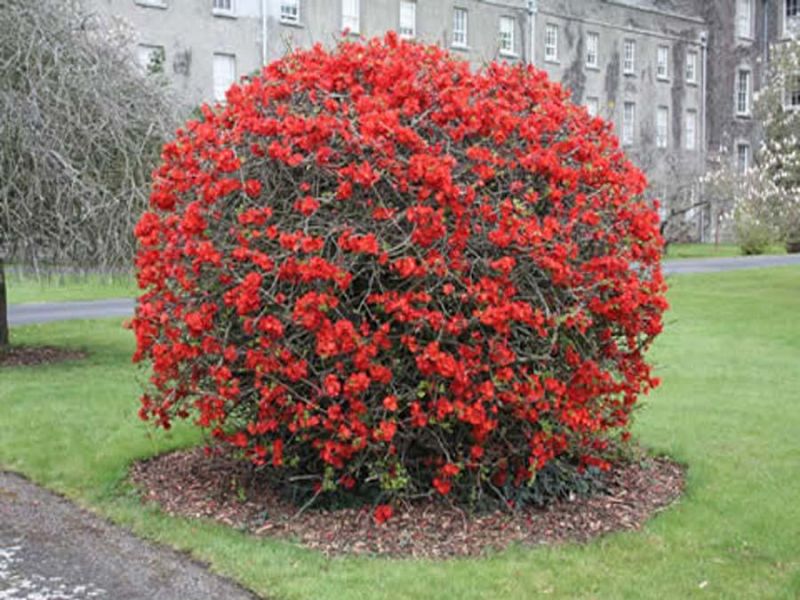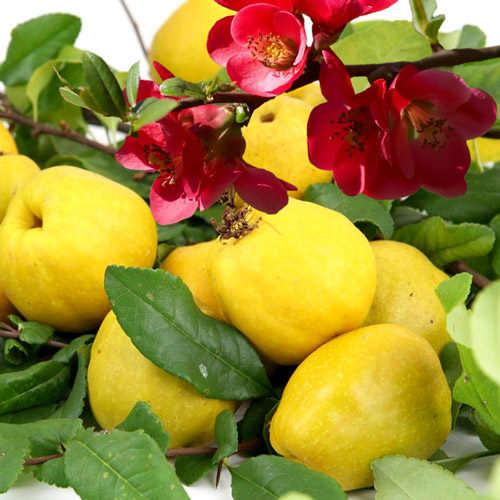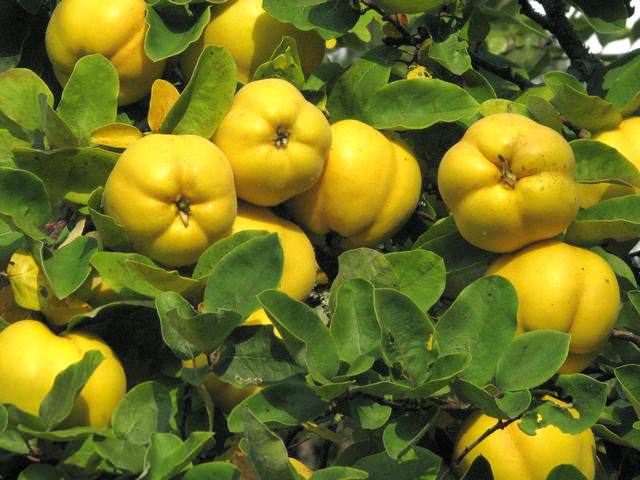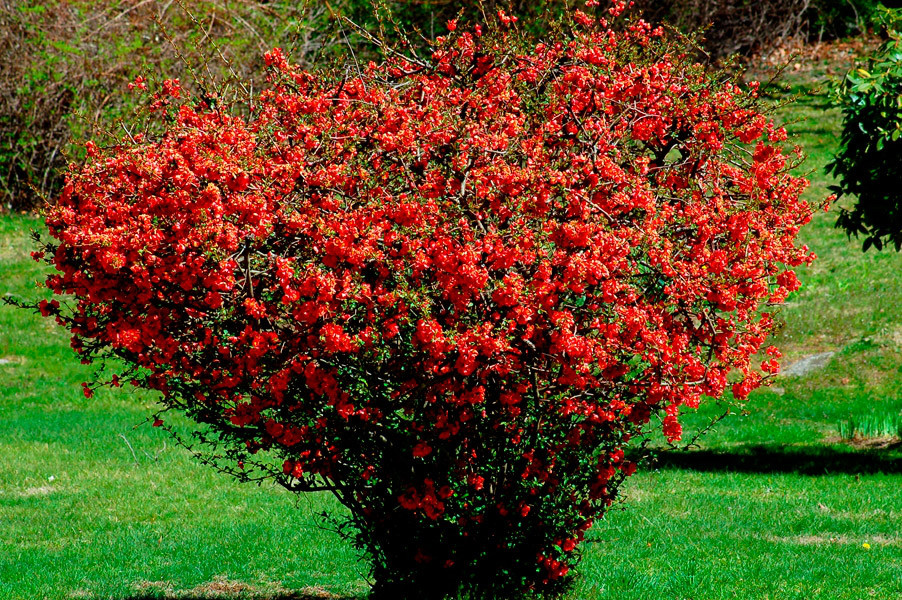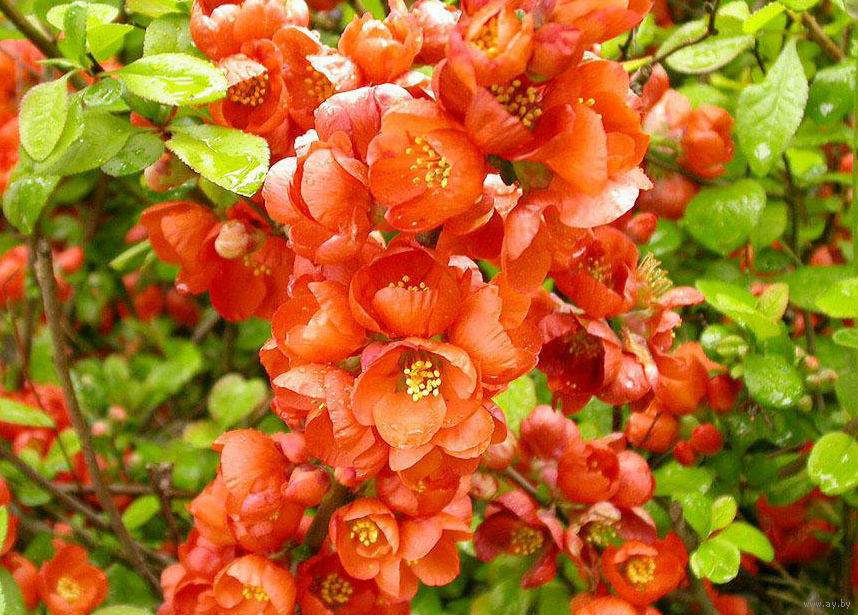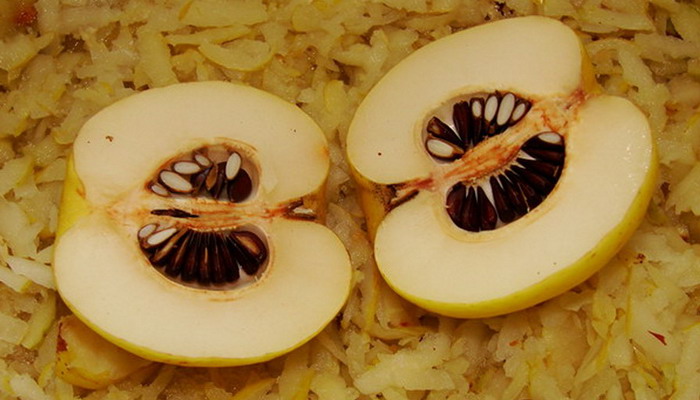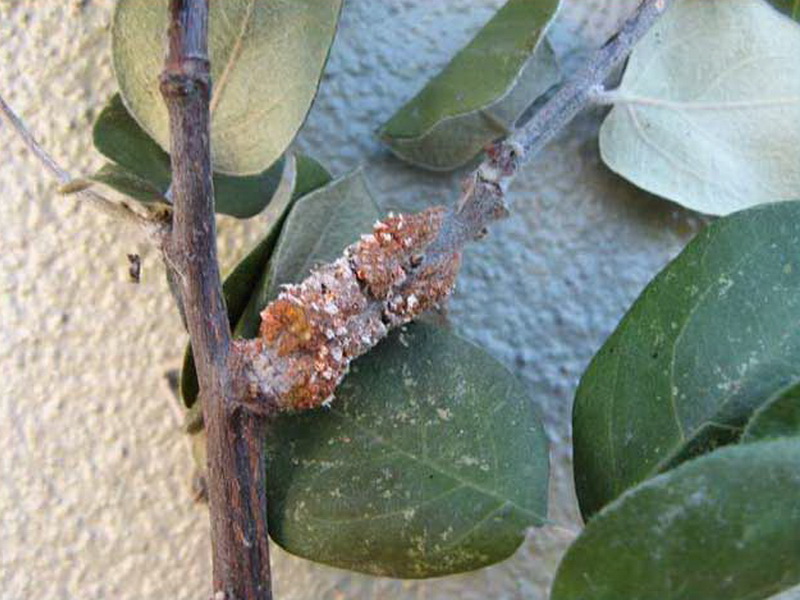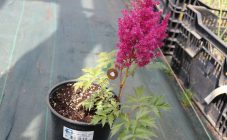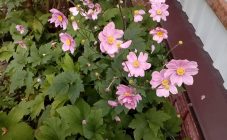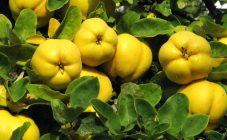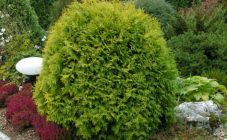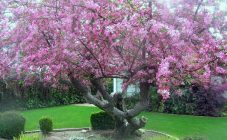Content:
Japanese quince in domestic gardens is cultivated as an ornamental shrub, which in the springtime pleases the inhabitants with colorful buds of bright red color. In addition, the fruit of this plant is very useful, it has found application in alternative medicine for the prevention of certain types of diseases. That is why the shrub is gaining more and more popularity every year. Quince is very unpretentious, therefore, even a novice gardener can cope with its cultivation.
General information
What is Japanese quince, and how did it appear in Russian gardens? From the name you can guess that the homeland of the shrub is the well-known country of Japan. Due to the fact that the plant is very common in China, it is often called Chinese quince. However, its correct name is Japanese chaenomeles. This species includes several more varieties of chaenomeles. Translated from Greek, the name of the shrub means "to split the apple." Perhaps that is why one can often hear the name Japanese apple from domestic gardeners.
Japanese quince is a fairly ancient plant with a history of 4000 years. At home, it is grown no longer as an ornamental tree, but as a fruit tree. Chaenomeles was brought to Europe only about 200 years ago. Landscaping immediately found use for the stylish and unpretentious shrub. After some more time, the overseas guests were tasted and the fruits, and then their rich chemical composition was studied.
Chaenomeles, or Japanese quince, gives gardeners a generous harvest of fruits rich in useful microelements. Ripe fruit contains up to 13% sugars in its composition, among which fructose, sucrose and glucose are in the lead. In addition, this includes organic acids, ascorbic acid.
Of the vitamins, quince contains A, B, K, E, C, PP. Also, the fruits can boast of the presence of useful trace elements, namely:
- manganese;
- titanium;
- boron;
- nickel;
- cobalt;
- iron, etc.
The chemical composition of quince fruits is very rich, and therefore they are used not only for prevention, but also for the treatment of many diseases.
Plant characteristic
Japanese decorative quince has a very decorative appearance. It is a shrub or small tree, up to 3 meters high. The twigs are densely covered with foliage; sharp thorns are located at the places of the shoots. The leaves are emerald in color. The branches are distinguished by good flexibility, because the plant is often used to decorate hedges or are planted simply for decorating a garden.
Among other things, quince is a beautiful shrub, which in the spring period is densely covered with five-petal flowers, the color of which may differ, depending on the variety. How beautiful quince blooms, gardeners know firsthand, each flower reaches a diameter of 3 to 5 cm.
After flowering ends, the quince begins to form fruits. At the stage of technical ripeness, they acquire a yellow-green or light orange color.Outside, the fruit is covered with a waxy bloom, which protects it from sudden temperature fluctuations. The weight of one fruit reaches 50 grams, and its diameter is 3-5 cm. Almost half of this volume is occupied by large brown seeds.
Characteristics of species and varieties
Quince is an amazing tree. To date, more than 500 of its varieties are known. In Russia, this list is much smaller, because not all species are able to withstand harsh climatic conditions. The Russian winter is only suitable for 15 varieties of Japanese quince.
The Crimson & Gold variety has excellent decorative properties. The flowers have bright yellow stamens that stand out against the background of dark red petals. The flowering period is in May, the harvest ripens towards the end of September or the beginning of October. Fruit can be eaten fresh or used for processing.
Pink Lady is a medium-sized bush variety with pink decorative flowers. Fruits are similar to apples with dense pulp, at the stage of technical ripeness they have a yellow color. If you choose the right recipe and preserve the harvested crop, then in the spring you can not worry about vitamin deficiency.
Quince Nivalis differs from other brethren in white flowers. Its shoots are creeping, while in a young plant the twigs grow vertically, and then become spreading. In this regard, inexperienced gardeners are inclined to assert that the fruits of this variety are a vegetable, because they grow almost on the ground.
Siberia and the Urals have a particularly harsh climate, so even the most frost-resistant varieties of quince may need shelter for the winter. Otherwise, the bushes may freeze slightly.
Landing features
Japanese quince prefers well-lit areas for its cultivation.
Any soil is suitable for growing chaenomeles. You can even plant it on depleted or damp clay soil. In this case, you should take care of moderate moisture and enrich the selected area with humus. Salty and calcareous soil is completely unsuitable for quince cultivation. In regions such as Moscow and the Moscow region, the shrub hibernates without additional shelter. Freezing of fruit buds and young shoots was noted only in severe winters with little snow.
Planting a seedling in open ground is carried out mainly in the spring, as soon as the snow cover comes off the ground. The sapling can be planted in the fall, when active leaf fall begins, however, a thermophilic plant simply may not have time to root well. As a result, it will die in winter.
Not all gardeners know what a young quince looks like. Before you go to the market and purchase planting material for your site, you need to carefully study the distinctive features of the shrub. Otherwise, you can easily run into an unscrupulous seller and become a victim of deception. An apple tree will be sold to a gullible buyer for a quince.
If you are not sure that the seedling will be able to be recognized on your own, it is better to make a purchase at company stores, nurseries or other authorized points of sale that value their reputation.
The best survival rate is for quince seedlings aged 2 years. When carrying out planting work, it is necessary to ensure that the root collar is located above the level of the soil surface. Shrubs from 3 to 5 years old are planted in a hole with a depth of half a meter to 0.8 m, its diameter should be 0.5 m.
For planting Japanese quince, a mixture is prepared in a ratio of 2: 1: 2 from peat, sand and leafy soil, respectively. In addition, a little potassium nitrate, superphosphate, wood ash, as well as 1.5 buckets of any humus are added to the hole.Plants are planted in small groups. So that adult plants do not experience discomfort, and they do not clog each other, a distance of at least 1 meter is left between them.
Care
How Japanese quince grows is easy to figure out, but how to properly care for it? In the first year after planting the shrub on the site, it is necessary to provide it with regular watering. This is especially true during a drought. To prevent excess moisture from evaporating too quickly, it is advisable to mulch the soil around the shrub. A layer of mulch from sawdust or peat is made from 3 to 5 cm.
Quince is an ornamental shrub that grows in height very slowly. That is why, in the first couple of years, a young plant needs feeding and timely fertilization. In the spring, nitrogen-containing fertilizers are added, fresh slurry is introduced, in the fall the need for phosphorus and potassium fertilizers increases. With all the necessary measures of agricultural technology, the quince will bear fruit in 4-5 years. An adult plant needs special care.
The description of the plant indicates that it does not require abundant watering. It is enough to water the shrub once a month and it will thrive. Quince fertilization is carried out according to the same principle and schedule as for other berry bushes. The formation of a shrub is to cut off branches over 5 years old that have fallen to the ground with the onset of spring. Also, the crowns should not be allowed to thicken. Although the number of formative cuttings is not large, more than 20 shoots are not left on one plant. Do not delete too many branches at a time.
In the spring, work related to pruning should be carried out even before the onset of bud swelling. In the fall, they should be abandoned altogether, since this can lead to freezing of the bush. Quince, or chaenomeles, although it is a cold-resistant crop, but the formation of the crown before the cold weather is extremely painful.
In regions with harsh climatic conditions for the cold season, the shrub requires shelter, unless, of course, it is some newly introduced hybrid with improved characteristics. Japanese quince does not tolerate winds in the winter cold, therefore it is recommended to cover it with spruce branches or install snow shields.
Reproduction
Quince attracts more and more attention of gardeners and landscape designers. What kind of fruit is this, and how can it be propagated so as not to spend a lot of money on the purchase of planting material?
Reproduction of Japanese quince is possible in three main ways:
- seminal;
- grafting;
- division of the bush.
The simplest, but at the same time, reliable way to preserve all the varietal qualities of the mother plant is cuttings. The stalk is harvested at the very beginning of summer. For blanks, choose a fine sunny day. It is advisable to do everything in the morning. In this case, the material must be cut so that it is with a small part of last year's wood. Next, the cuttings of Japanese quince are placed for one day in a solution of a growth stimulator, after which they are planted at an angle into the prepared mixture of sand and peat in a ratio of 1: 3. After a month and a half, roots form on the branches. This happens only if the air temperature does not drop below + 20 ° C.
May is the time to inoculate the ayvar seedling with a varietal cuttings, which should be prepared at the time of the second sap flow (it falls on July or August). For these purposes, a T-shaped incision is made in the bark of the seedling and its edges are slightly folded back. A varietal quince stalk with a bud is carefully inserted into the hole. After that, the twigs are pressed tightly against each other, fixed and the wound is covered with garden pitch. The survival rate of the scion can be checked after a month. The next year, the bud should already sprout, after which the bandage is removed.
Diseases and pests
Aphids cause great harm to Japanese quince. The appearance of this insect becomes a real disaster. At the first signs of its presence, preventive treatments with special-purpose drugs should be carried out immediately.
If it is damp and cool weather on the street for a long period, then this is fraught with the appearance and development of fungal infections:
- necrosis;
- spotting;
- cercosporosis;
- ramulariasis.
Garden shrubs should be treated with copper-soapy solution and foundation. Supporters of folk remedies for struggle and prevention can use the infusion of onions. To do this, you need to take 170 grams of husks, throw them into 10 liters of hot water and insist for a day. Treatments are carried out every week.
A wonderful ornamental shrub Japanese quince can be used both for single plantings and for group compositions. Great benefits are brought to the human body if you constantly eat its fruits. They can be used both fresh and used for preservation preparation, processing. Quince fruits have one remarkable property: they have not only a large number of biologically active components, but also a whole complex of vitamins. This makes it possible to use them in dietary nutrition, as well as for the prevention and treatment of certain diseases. Growing and caring for Japanese quince is not particularly difficult, therefore even an inexperienced gardener can grow it on his site.
